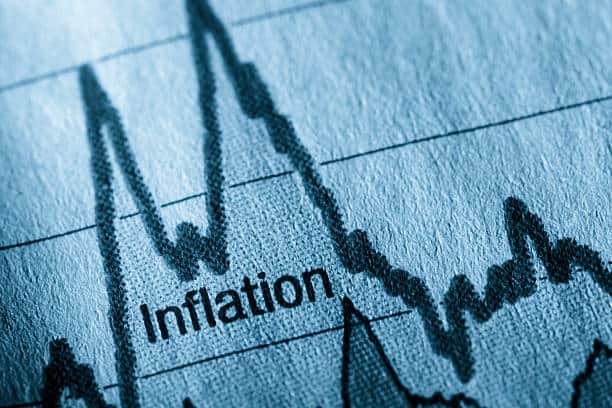Inflation is one big risk that you need to consider when it comes to your investments. You may have invested in stocks, property, or even government bonds. What is the effect of inflation on your returns? Now, inflation is extremely important because the returns that you are going to end up with are in the future.
What is the effect of inflation on your investment in the bond?
It’s one of the risks that you need to consider when it comes to investing in government bonds. Now, you might already know that inflation is the increase in the prices for goods and services. It’s a general rise in the prices of goods and services.
What does this have to do with your investment in bonds?
Inflation is an important factor when you’re looking at future cash flows. When you make an investment in the government bond today, you are making an investment today and expecting future cash flows.
If you look at the example that we had considered in my previous article, you will discover that this person had invested ZMW50,000 face value in a five-year bond with a return or coupon rate of 11%. Today, I want us to look at whether they are going to get exactly ZMW73,100, which is what we computed in the previous video. Is that what they are going to get when their bond matures, or how does inflation affect that return?
Inflation affects the value of your future cash flows, meaning that the ZMW50,000 that you’re investing today will not be worth exactly ZMW50,000 five years from now in terms of how much you’re able to buy with that ZMW50,000. So, I’d like us to go back to the example that we had considered and look at the effect of inflation on the cash flows in this bond investment
To understand the effect of inflation on the cash flows expected in a bond investment, let’s revisit the example from my previous video. As a reminder, we had considered a person who invested ZMW50,000 in a five-year bond with a coupon rate of 11%. We had calculated that the total cash flows that this person would receive at maturity would be the coupon income plus the face value amount. The coupon incomes, after taking into account tax and handling fees, would amount to an annual income of ZMW4,620, and when multiplied by five years, would give us a total of ZMW23,100. When added to the ZMW50,000 face value, the expected total income would be ZMW73,100 by March 2027 when the bond matures.
However, the question is whether the ZMW73,100 will have the same purchasing power in five years as it does today. To examine this, we need to consider the cash flows or inflows over the five years. Year zero represents the day of the initial investment, with the face value amount of ZMW50,000 being an outflow. Over the next five years, the inflows will be the annual coupon incomes of ZMW4,620, and at maturity, the face value amount of ZMW50,000 plus the final coupon income of ZMW4,620 will be received, resulting in a total of ZMW54,620.
Assuming there is no effect of inflation on these cash flows, we would expect to receive exactly ZMW73,100, with the same purchasing power as today. However, in real life, inflation occurs and results in the increase of prices for goods and services. As we have already considered, inflation devalues the purchasing power of currency or kwacha. As a result, the ZMW73,100 expected in five years will not have the same purchasing power as it does today due to the effect of inflation.
How inflation affects the value of your investments.
For us to understand how inflation will affect the purchasing power of your money, we need to apply a discount rate. Okay, this is a finance term. A discount rate is simply a rate that considers the time value of money. The time value of money is really a concept that says that the amount of money you have today is not worth the same ten years from now, two years from now, or five years from now. This is because of the effect of inflation, of the increase in the prices of goods and services. We expect that the value of the money that you have today will not be the same as the value in five years. The value will have reduced, and so we have to apply a discount rate to the future expected income.
When we apply this discount rate, we are actually trying to understand what is ZMW50,000 is in five years from today, with today’s value. There’s a formula that we apply to get the present value of your future cash inflows. For you to get the present value of your future cash flows, you need to apply this formula, which is 1 over 1 plus the rate and then to the power of the number of years.
In our example, what we are doing is 1 over 1 plus the rate, which in this case is the inflation rate. It could even be the interest rate, by the way, but in our case, we are looking at it from the perspective of the inflation rate. So, we add 11% as an example, and close the bracket, to the power of the number of years, which in this case is one. Then you press enter. This gives you the discount rate, and then you just drop this formula down to get the other values.
For you to get the present value, what is ZMW4,620 worth in a year, assuming that inflation is 11%? What is it worth a year from now? So, you need to apply this discount rate. You say the discount rate is multiplied by the future expected cash flows. That will give you the present value. Your purchasing power of this ZMW4,620 a year from now will only be ZMW4,162.
Currently, inflation stands at 9.9% as of July 2022 for Zambia. So, for you to understand your present value of future cash flows, you need to apply this rate. So, 9.9% will give you these present values of your coupon incomes. For year one, we expect ZMW4,200. For year two, we expect ZMW3,825. And then, at the end of the five years, if the inflation rate continues being 10 or 9.9%, we expect you to get ZMW48,745.
Now, in terms of the actual money that is going to be given to you, you are going to get exactly ZMW73,100. However, the purchasing power of this ZMW73,100 is not the same because of inflation. The purchasing power is just ZMW48,745. So, with time, the value of your ZMW73,100 is reduced or discounted because of inflation. This is a big risk, isn’t it? It’s devaluing the value of your investment in this bond because you will not be able to buy the same amount of goods or services with the ZMW73,100 that you expect to get.
That is the risk of inflation on your bond investment. So, the question really should be, what is the real rate of return on my investment in the bond?
We expect inflation to continue coming down as per the Zambian Governments projections. They’ve targeted an inflation rate range of 6-8% by 2023, which is next year. Let’s assume that inflation comes down to 8%. What happens to the purchasing power of this ZMW50,000 face value investment? It comes to ZMW52,475. If the inflation rate comes to 6%, it comes to ZMW56,824. So, you need to watch how inflation affects your investment in the bond.
Under the worst-case scenario, supposing the inflation rate goes all the way up to 22%, which happened, by the way, in 2021, inflation came to about 22.9% at some time. What happens to your investment in the bonds? Do you really get any returns? It’s merely ZMW31,000. So, you would have actually lost instead of making a return. You would have actually lost out cash by investing in this bond.
Let’s come back to a more realistic future expectation based on the economic activity happening right now. We are going to be at single-digit inflation of probably 8%. This will give you a return of ZMW52,475, which is the purchasing power of your investment in real time. In terms of cash flow, you are going to get ZMW73,100, but in terms of the buying power, it is only worth ZMW52,475. That is the effect of inflation on your bond cash flows because there are future cash flows, you need to take into account the effect of inflation on this investment.
Now, knowing what the effect of inflation is on your expected future cash flows is not to scare you. But it is to help you compare against other investments.
- What is the real rate of return if I keep this money in a fixed deposit account?
- What is the real rate of return if I keep this money in a savings account?
- What am I going to make? Make these comparisons in the future.
What do you do, having known that there is this effect in terms of the purchasing power of the future cash flows that you’re going to make on your bond?
- The first thing you need to do is keep an eye on the inflation rate. If it’s something you cannot bear, you can always offload your bond investment on the secondary market. That is why the secondary market is important. In our case, it’s the Lusaka Securities Exchange. You can always sell your investment in the bond on the secondary market.
- The other consideration is diversifying your investment. If you’re just starting to invest, you might have just bought an investment in a five-year bond. But also consider other investment vehicles. We’ve got property and investing in stocks, which is buying shares in other companies. This way, you can make income through dividends as well as capital appreciation of the investment in that company. Don’t just consider investing in the bond but also diversify your investment so that you have a balance in terms of risk.
- The other consideration could be investing in shorter-term maturity bonds. Bonds of shorter-term durations or maturity dates, so you could consider investing in bonds of maybe two years, because the longer the bond, the more you expose yourself to the risk of inflation. Remember, as time goes by, your money loses its value. That is why you are exposed to this inflation rate.
Those are some of the actionable steps that you can take to protect yourself from exposing yourself to this risk of inflation.



